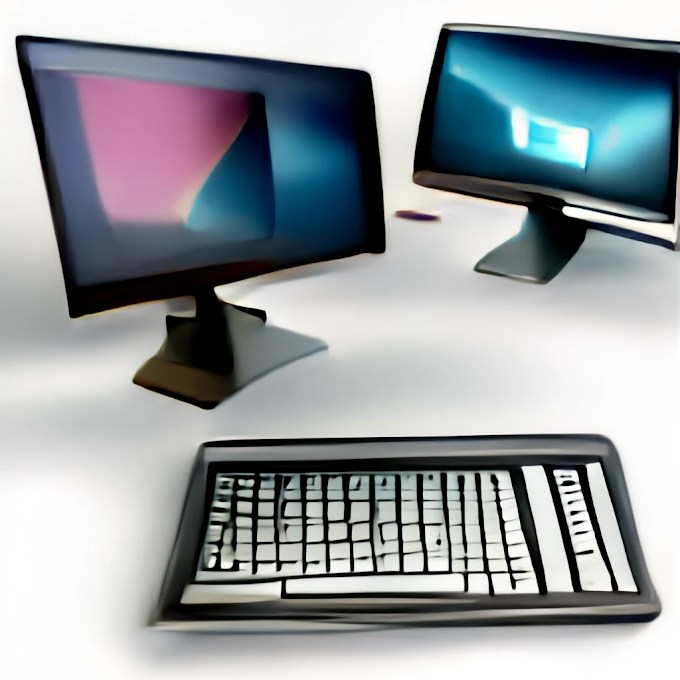Changing Window Settings
The process of changing window settings can vary depending on the operating system and version that you are using. However, in general, you can access window settings through the control panel or settings menu. Once you have accessed the window settings, you can adjust various settings such as the size, position, and appearance of windows. You can also change the behavior of windows, such as how they open, close, and minimize.
In Windows 10, for example, you can access window settings by clicking on the start menu, then going to Settings > System > Display. From here, you can adjust the resolution, scale, and layout of your windows. Additionally, you can access the advanced settings to adjust the color, contrast, and brightness of your display.
In MacOS, you can access window settings by going to System Preferences > Displays. From here, you can adjust the resolution, refresh rate, and color profile of your display. Additionally, you can access the Arrangement tab to change the position and layout of your windows.
In Linux, the process of changing window settings can vary depending on the distribution and desktop environment you are using. However, in general, you can access window settings through the settings or preferences menu of your desktop environment.
Keep in mind that some specific settings are not available in some operating system, or may be in different location.
In general, the process of changing window settings is relatively straightforward and should not be difficult to accomplish. However, if you encounter any issues or are unsure how to access or adjust a specific setting, it is recommended that you consult the documentation or seek assistance from a technical support professional.
Adding/Removing programs
Adding or removing programs, also known as installing or uninstalling software, is a common task that can be performed on most operating systems. The process of adding or removing programs can vary depending on the operating system and version that you are using.
In Windows, you can add programs by downloading and running an installer file. The installer will guide you through the process of installing the program, including any necessary configuration settings. You can also add programs by using the Microsoft Store, which is an online platform that allows you to download and install apps and games. To remove a program, you can go to the Control Panel and select "Programs and Features" or "Apps and Features" (depending on your version of windows) , then select the program you want to remove and click "Uninstall" or "Remove".
In MacOS, you can add programs by downloading and running an installer package. The installer will guide you through the process of installing the program. You can also add programs by using the Mac App Store, which is an online platform that allows you to download and install apps and games. To remove a program, you can drag the program icon from the Applications folder to the trash.
In Linux, the process of adding or removing programs can vary depending on the distribution and package manager you are using. Many Linux distributions use package managers, such as apt, yum, or dnf, which allow you to easily install and remove software. You can also add and remove programs by using a software center or package manager, which is a graphical interface that allows you to search for, install, and remove programs.
It is important to note that some programs may not be completely removed after uninstalling them, and may leave behind some files or registry entries. And also, removing some programs may cause other programs to malfunction, So it is advisable to read the instructions carefully and use the correct method for uninstalling.
In general, the process of adding or removing programs is relatively straightforward and should not be difficult to accomplish. However, if you encounter any issues or are unsure how to add or remove a specific program, it is recommended that you consult the documentation or seek assistance from a technical support professional.
Clearing the contents of document menu
The document menu, also known as the "recent documents" list, is a feature that is present in many programs and operating systems. It keeps a record of the most recently opened files, allowing you to quickly access them again in the future. Clearing the contents of the document menu involves removing the list of recently opened files from the menu.
In Windows, the document menu can be accessed by clicking on the "File" menu in most programs, and then selecting "Recent" or "Recent Documents". To clear the contents of the document menu, you can go to the "File" menu and select "Clear Recent Documents" or "Clear Recent Files" or "Clear Recent List" depending on the program. Some programs may also have an option to clear the recent documents list from the settings menu.
In MacOS, the document menu can be accessed by clicking on the "File" menu in most programs, and then selecting "Open Recent" or "Recent Documents". To clear the contents of the document menu, you can go to the "File" menu and select "Close All" or "Clear Recent Documents" or some program have option to clear recent documents list in preferences.
In Linux, the process of clearing the document menu can vary depending on the program and desktop environment you are using. Some programs may have an option to clear the recent documents list from the settings menu, while others may not have this feature.
Clearing the contents of the document menu can be useful if you want to remove old or irrelevant files from the list, or if you want to protect your privacy by removing records of recently opened files.
It's important to note that clearing the contents of the document menu will remove all recently opened files from the list and cannot be undone. If you want to keep some files in the list, you can remove them individually.
In general, the process of clearing the contents of the document menu is relatively straightforward and should not be difficult to accomplish. However, if you encounter any issues or are unsure how to clear the contents of the document menu, it is recommended that you consult the program's documentation or seek assistance from a technical support professional.
Customizing the taskbar
The taskbar is a bar that typically appears at the bottom of the screen on most desktop operating systems. It contains the Start menu, the system tray, and shortcuts to frequently used programs. Customizing the taskbar refers to making changes to the appearance, behavior, and functionality of the taskbar to suit your preferences and needs..png)
In Windows, you can customize the taskbar by right-clicking on an empty area of the taskbar and selecting "Taskbar settings" or "Properties". From here, you can adjust various settings such as the location of the taskbar, the size of the taskbar buttons, the color and transparency of the taskbar, and the behavior of taskbar icons. You can also pin or unpin programs, resize the taskbar, show or hide the taskbar, group similar taskbar items, hide labels and also change the taskbar position.
In MacOS, the taskbar is called the Dock, and it can be customized by going to System Preferences > Dock. From here, you can adjust various settings such as the size and position of the Dock, the behavior of Dock icons, the hiding and showing of the Dock, and the magnification of the Dock icons.
In Linux, the process of customizing the taskbar can vary depending on the distribution and desktop environment you are using. However, most desktop environments provide a settings menu or preferences menu that allows you to customize the taskbar.
Customizing the taskbar can be useful if you want to make the taskbar more functional, easier to use, or more visually appealing. For example, you can pin frequently used programs to the taskbar for quick access, resize the taskbar to fit more icons, or change the color of the taskbar to match your desktop background.
It's important to note that some customizations may not work properly or may cause issues with the taskbar, so it's advisable to always make sure to backup your system or create restore point before making any significant changes.
In general, the process of customizing the taskbar is relatively straightforward and should not be difficult to accomplish. However, if you encounter any issues or are unsure how to customize the taskbar, it is recommended that you consult the documentation or seek assistance from a technical support professional.
Control Panel Items
The control panel is a feature that is present in most operating systems. It is a centralized location where users can access and manage various settings and options for their computer. The control panel typically contains a variety of items, each of which provides access to different settings and options.
In Windows, common control panel items include:
- Display: Allows you to adjust the resolution, color depth, and refresh rate of your monitor, as well as the appearance and effects of your desktop.
- Ease of Access: Allows you to customize the settings that make your computer easier to use, such as the cursor size, the keyboard repeat rate, and the speech recognition settings.
- Network and Internet: Allows you to manage your network connections, including wired and wireless connections, and configure settings such as proxy servers and IP addresses.
- Power Options: Allows you to manage the power settings of your computer, such as the sleep and hibernate settings, and the power plans.
- Programs: Allows you to view and manage the programs that are installed on your computer, including installing, uninstalling and repair programs.
- User Accounts: Allows you to manage the accounts on your computer, including creating, deleting, and managing user accounts, and changing the password and account settings.
- Security and Maintenance: Allows you to check the security status and maintenance of your computer, including backups, system updates, and troubleshoot problems.
In MacOS, common control panel items include:
- System Preferences: Allows you to adjust various system settings, such as the display, sound, and network settings.
- Users & Groups: Allows you to manage the accounts on your computer, including creating, deleting, and managing user accounts, and changing the password and account settings.
- Time Machine: Allows you to manage the backups of your computer, including setting up and scheduling backups.
- Spotlight: Allows you to configure the Spotlight search feature, including what types of files and folders should be indexed.
In Linux, the process of accessing control panel items can vary depending on the distribution and desktop environment you are using. However, most desktop environments provide a settings menu or preferences menu that allows you to access and manage various settings and options for your computer.
Control panel items are useful because they allow you to make changes to your computer's settings and options without having to navigate through the file system or use command-line tools. This makes it easy to find and change settings, which can be helpful for troubleshooting and optimizing your computer's performance.
It is important to note that some control panel items may require administrator privileges to access and make changes, and also some options may be hidden in different location.
In general, the process of accessing and managing control panel items is relatively straightforward and should not be difficult to accomplish. However, if you encounter any issues or are unsure how to access or manage a specific control panel item, it is recommended that you consult the documentation or seek assistance from a technical support professional.
Click here for Lok Sewa Computer Operator mock test



0 Comments